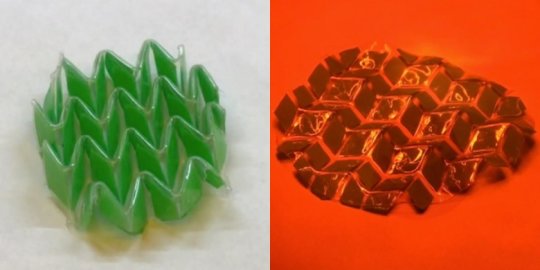[ad_1]
A new material developed by University of Colorado Boulder engineers can transform into complex, pre-programmed shapes via light and temperature stimuli, allowing a literal square peg to morph and fit into a round hole before fully reverting to its original form.
The controllable shape-shifting material, described today in the journal Science Advances, could have broad applications for manufacturing, robotics, biomedical devices and artificial muscles.
“The ability to form materials that can repeatedly oscillate back and forth between two independent shapes by exposing them to light will open up a wide range of new applications and approaches to areas such as additive manufacturing, robotics and biomaterials,” said Christopher Bowman, senior author of the new study and a Distinguished Professor in CU Boulder’s Department of Chemical and Biological Engineering (CHBE).
Previous efforts have used a variety of physical mechanisms to alter an object’s size, shape or texture with programmable stimuli. However, such materials have historically been limited in size or extent and the object state changes have proven difficult to fully reverse.
The new CU Boulder material achieves readily programmable two-way transformations on a macroscopic level by using liquid crystal elastomers (LCEs), the same technology underlying modern television displays. The unique molecular arrangement of LCEs make them susceptible to dynamic change via heat and light.
To solve this, the researchers installed a light-activated trigger to LCE networks that can set a desired molecular alignment in advance by exposing the object to particular wavelengths of light. The trigger then remains inactive until exposed to the corresponding heat stimuli. For example, a hand-folded origami swan programmed in this fashion will remain folded at room temperature. When heated to 200 degrees Fahrenheit, however, the swan relaxes into a flat sheet. Later, as it cools back to room temperature, it will gradually regain its pre-programmed swan shape.
The ability to change and then change back gives this new material a wide range of possible applications, especially for future biomedical devices that could become more flexible and adaptable than ever before.
“We view this as an elegant foundational system for transforming an object’s properties,” said Matthew McBride, lead author of the new study and a post-doctoral researcher in CHBE. “We plan to continue optimizing and exploring the possibilities of this technology.”
Story Source:
Materials provided by University of Colorado at Boulder. Note: Content may be edited for style and length.
[ad_2]















